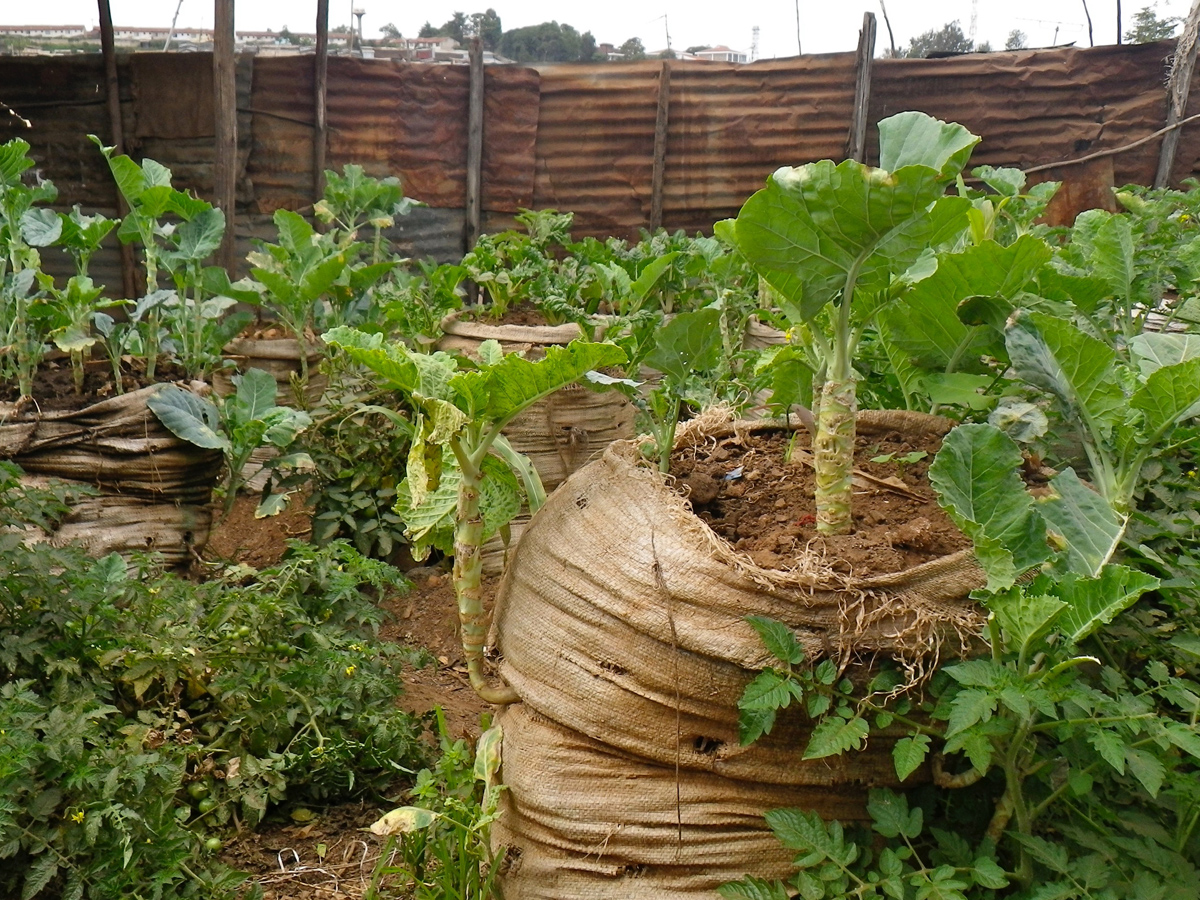Urban agriculture taking root in African cities

Urban farms like this one in Kibra constituency, Nairobi County, Kenya, provide an important food and income source for low- and middle-income city residents. Photo: Christopher Gore.
In sub-Saharan Africa, citizen groups, city bureaucrats and politicians are leading the way in developing urban agriculture policies, says Ryerson University politics and public administration professor Christopher Gore.
Professor Gore has long studied Africa with a focus on policy and environment, and he has examined food security, urban agriculture, energy access and climate change in some African countries. He recently published an article in the journal World Development, in which he outlined the in-depth field research he carried out in Kenya, Tanzania and Uganda since 2012 that saw him interview approximately 50 national and local political figures, citizens and citizen groups.
His research has found that while there might be many international organizations, donors and other groups trying to encourage urban food security through agriculture, when it comes to cities like Nairobi in Kenya, Kampala in Uganda or Dar es Salaam in Tanzania, it’s the combination of civil society groups, city bureaucrats and municipal politicians who are the ones essential to helping urban agriculture policy take root.
“For sub-Saharan Africa that’s a real novelty. Cities are expected to be on the receiving end of national policy and practice,” said professor Gore. Sometimes, cities pushing for urban agriculture can run into obstacles such as national governments that impede cities’ efforts, because city-based agriculture doesn’t fit within the national government’s concept of a modern city. The reality, however, is that urban agriculture has persisted for decades, says professor Gore.
“It’s a huge food source, and for all income levels, so low, middle and high income,” said professor Gore, adding that not only is growing their own food important from a nutrition perspective for residents, it also offers income generation opportunities. He says that in some cities, it’s estimated that 25 to 50 per cent of leafy greens consumed in cities are being produced within city limits.
Urban agriculture in these cities can range from small rooftop gardens to raising livestock. Once reluctant to formally support urban agriculture, Nairobi is now one of the most advanced cities in the sub-continent in its promotion of laws, policies and programs to protect and support urban food production. Nairobi's promotion and protection of the right to farm in the city has inspired other cities and the national government to promote and protect urban farming, says professor Gore.
Historically and today, urban agriculture in African cities provides a small buffer to fluctuating food prices and when there is civil unrest, says professor Gore. There are also environmental lessons to be learned.
In sub-Saharan Africa, where the potential impacts from climate change are profound, professor Gore says that urban agriculture can provide benefits such as increasing water retention, reducing erosion and providing green space. It is also creating employment opportunities, particularly for women and youth.
Finally, in relation to the study of politics and policy, he says that studying urban agriculture policy in Nairobi, Kampala and Dar es Salaam reveals a lot about the evolution of urban politics more generally; city-based coalitions in African cities, which bring together citizens, civil society groups and governments can help advance policy that is responsive to citizen needs. This is in contrast to top-down policy prescriptions from a national or international level.
Professor Gore says many cities worldwide are trying to learn from each other about developing urban agriculture policies and practices. For example, 206 cities — including Nairobi and Toronto — have pledged to develop sustainable food systems by signing up to the Milan Urban Food Policy Pact. Nairobi in particular is actively engaging in international forums about urban food production to share its activities. As a hub for international organizations, including several agricultural bodies, the city’s experience is being recognized by the global community.
Support for this research has been provided by the Social Sciences and Humanities Research Council of Canada.